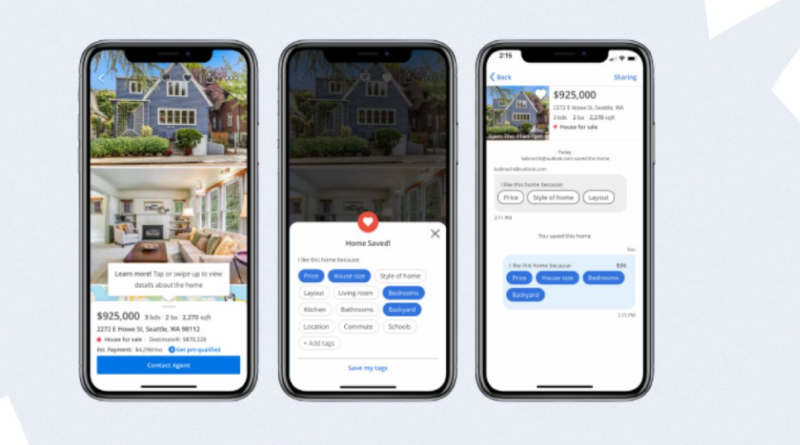Powerhouse Essential Features for Your Zillow-like App
In the contemporary digital era, the real estate industry flourishes in the online domain. Platforms like Zillow have revolutionized how people search for properties, connecting buyers and sellers with unprecedented ease. If you’re considering entering this dynamic space by building a Zillow-like app, understanding the essential features is crucial for success.
This article delves into the core functionalities that will transform your app into a real estate powerhouse, attracting users and facilitating seamless property transactions.
1. Comprehensive Property Search:
When aiming to build an app like Zillow, prioritizing a comprehensive search function is paramount. Users should seamlessly discover properties tailored to their unique requirements and desires. Here’s a breakdown of key features your search engine should encompass:
- Location-based search: Allow users to search by zip code, address, neighborhood, or drawing custom search areas on a map.
- Detailed filters: Integrate a variety of filters to narrow down the search. This could include property type (single-family home, condo, apartment), price range, square footage, number of bedrooms and bathrooms, lot size, amenities (pool, garage, etc.), and even school district ratings for families.
- Advanced search options: Cater to power users by offering features like keyword search for specific features (e.g., “granite countertops”) or filtering by year built or HOA fees.
2. Rich Property Listings:
Once users find a property that piques their interest, the listing details need to be informative and engaging. Here’s what your listings should offer:
- High-quality photos and virtual tours: Showcase properties with stunning visuals. 360° virtual tours can further enhance the user experience, allowing potential buyers to explore a property virtually.
- Detailed property descriptions: Provide comprehensive information like square footage, number of bedrooms and bathrooms, lot size, year built, property features, and any unique details.
- Interactive maps: Integrate map views that display the property location and surrounding area, including nearby schools, parks, and amenities.
- Estimated mortgage calculator: Offer a built-in mortgage calculator to empower users to estimate their monthly payments based on different loan options.
- Contact information: Make it easy for users to contact the listing agent or seller directly through the app, either by phone, email, or in-app messaging.
3. User Accounts and Saved Searches:
Streamline the user experience by offering account creation. Logged-in users can save their searches, receive alerts for new listings that meet their criteria, and manage their favorite properties for easy revisiting. This fosters engagement and keeps users coming back to your app.
4. Community Features and Reviews:
Adding a community element can set your app apart. Consider incorporating features like:
- Neighborhood reviews: Allow users to leave reviews and ratings about specific neighborhoods, providing valuable insights to potential buyers.
- Q&A forum: Create a platform for users to ask questions and get answers from real estate professionals or local residents. This fosters a sense of community and provides valuable information for potential buyers.
5. Integration with Real Estate Agents:
Real estate agents are a vital part of the ecosystem. Here’s how your app can benefit them:
- Agent profiles: Allow agents to create profiles showcasing their experience, listings, and client testimonials.
- Lead generation: Integrate tools for agents to connect with potential buyers who have inquired about listings.
- Marketing tools: Consider offering optional in-app marketing tools for agents to promote their services and reach a wider audience.
6. Additional Features for a Competitive Edge:
While the core features are essential, consider these additional functionalities to give your app a competitive edge:
- AR/VR Integration: Augmented reality (AR) overlays can allow users to virtually “place” furniture in potential properties, while VR experiences can offer even more immersive virtual tours.
- Market trends and insights: Provide users with access to real estate market data and trends in their area. his enables them to make well-informed choices
- School district information: Integrate data on nearby schools, including ratings and performance metrics, which is crucial for families searching for homes.
- Mortgage pre-qualification tools: Partner with lenders to offer users pre-qualification tools, giving them a clearer picture of their affordability range.
Building Your Real Estate Empire:
Developing a Zillow-like app requires careful planning and execution. Beyond the features, consider factors like a user-friendly interface, robust security measures, and seamless integration with various devices and platforms. By focusing on a user-centric approach, offering valuable features for both buyers and sellers, and staying ahead of the curve with innovative tech integrations, you can build a real estate app that empowers users and revolutionizes the way people search for their dream homes.

